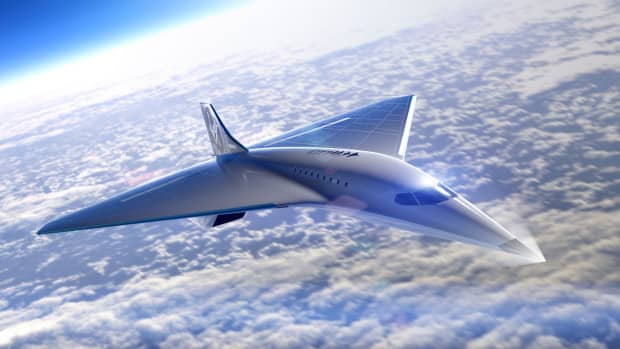This post was originally published on this site

Engines developed by Reaction and Rolls-Royce could be used in a supersonic business jet designed by Virgin Galactic
AFP PHOTO/VIRGIN GALACTIC/Getty Images
Engineering giant Rolls-Royce and privately owned Reaction Engines have entered a partnership to make a high-speed rocket engine that could power a jet from London to New York in as little as 90 minutes.
Engines developed by Reaction and Rolls-Royce RR, +0.89% could be used in a supersonic business jet designed by Virgin Galactic SPCE, -1.93%, which united with Rolls-Royce earlier this month on the venture. The two companies want to build a commercially-available jet that can fly at three times the speed of sound carrying 9 to 19 people at 60,000 feet.
Rolls-Royce invested £20-million ($26.3-million), increasing its stake in Reaction on Friday. The linchpin technology comes from Reaction and is called SABRE. It’s what the high-tech company calls “an air-breathing rocket engine” and it can take an aircraft from zero to five times the speed of sound. Reaction’s hybrid rocket engine has the potential for commercial use in high-speed airplane engines, which is exactly what Rolls-Royce and Virgin Galactic are looking for to power their newly-designed jet.
Rolls-Royce and Reaction will also explore applications of the technology in civil and defense aerospace gas turbine engines as well as hybrid-electric systems.
Reaction, a privately-held company founded in 1989 by three engineers from Rolls-Royce, is based in Oxfordshire with a subsidiary and testing facility in Colorado. It’s backed by the likes of Boeing BA, -0.57%, BAE BA, +0.26%, Rolls-Royce, the U.S. government’s Darpa, and the UK Space Agency.
Supersonic travel from London to New York has been unimaginable since the Concorde was retired in 2003. While this new partnership brings it closer to reality, the high-profile 2000 crash of the Concorde, which Rolls-Royce also built the engines for, was the beginning of the end for the last supersonic aircraft in commercial aviation use. Despite the technology existing, it has had no successor in the 17 years since its retirement.

